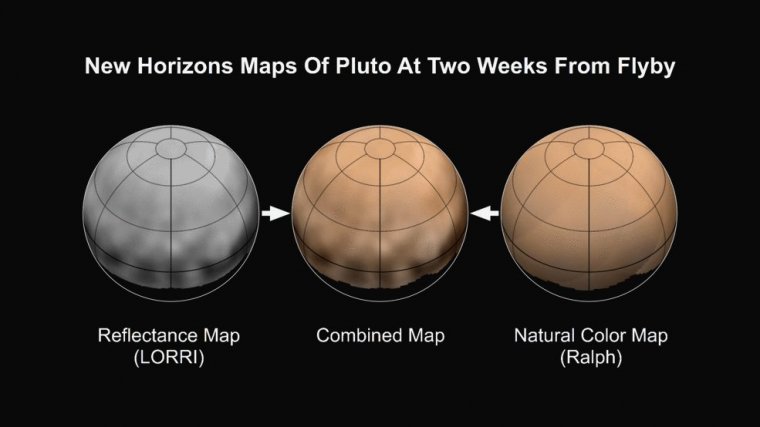| News / Space News |
Pluto: The 'Other' Red Planet
NASA | JULY 5, 2015
What color is Pluto? The answer, revealed in the first maps made from New Horizons data, turns out to be shades of reddish brown. Although this is reminiscent of Mars, the cause is almost certainly very different.

New Horizons scientists combined the latest black and white map of Pluto’s surface features (left) with a map of the planet’s colors (right) to produce a detailed color portrait of the planet’s northern hemisphere (center). ![]()
On Mars the coloring agent is iron oxide, commonly known as rust. On the dwarf planet Pluto, the reddish color is likely caused by hydrocarbon molecules that are formed when cosmic rays and solar ultraviolet light interact with methane in Pluto’s atmosphere and on its surface.
Experts have long thought that reddish substances are generated as a particular color of ultraviolet light from the sun, called Lyman-alpha, strikes molecules of the gas methane (CH4) in Pluto’s atmosphere, powering chemical reactions that create complex compounds called tholins. The tholins drop to the ground to form a reddish “gunk.”
Recent measurements with New Horizons’ Alice instrument reveal that a diffuse Lyman-alpha glow falling on Pluto from all directions in interplanetary space is strong enough to produce almost as much tholin as the direct rays of the sun.
Tholins have been found on other bodies in the outer solar system, including Titan and Triton, the largest moons of Saturn and Neptune, respectively, and made in laboratory experiments that simulate the atmospheres of those bodies.
YOU MAY ALSO LIKE

